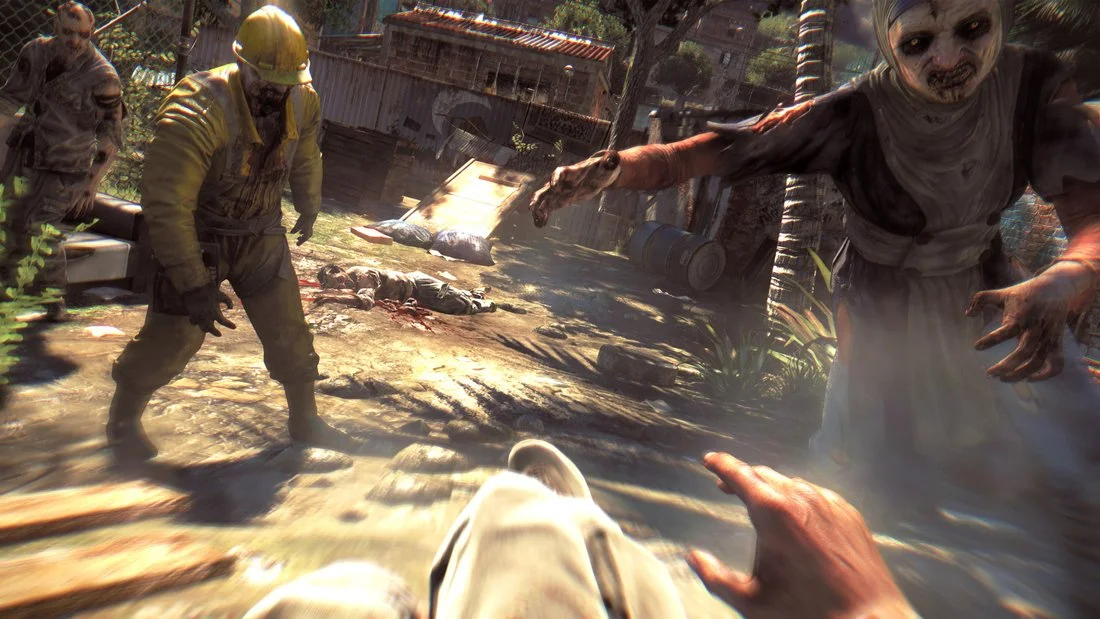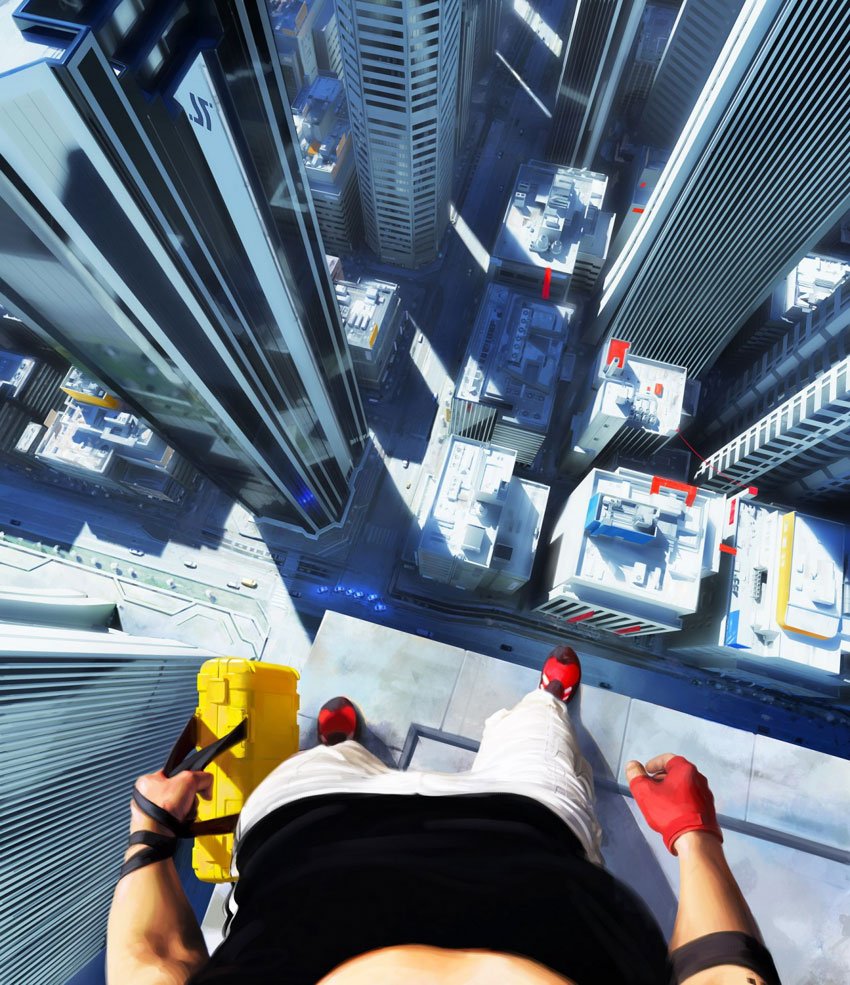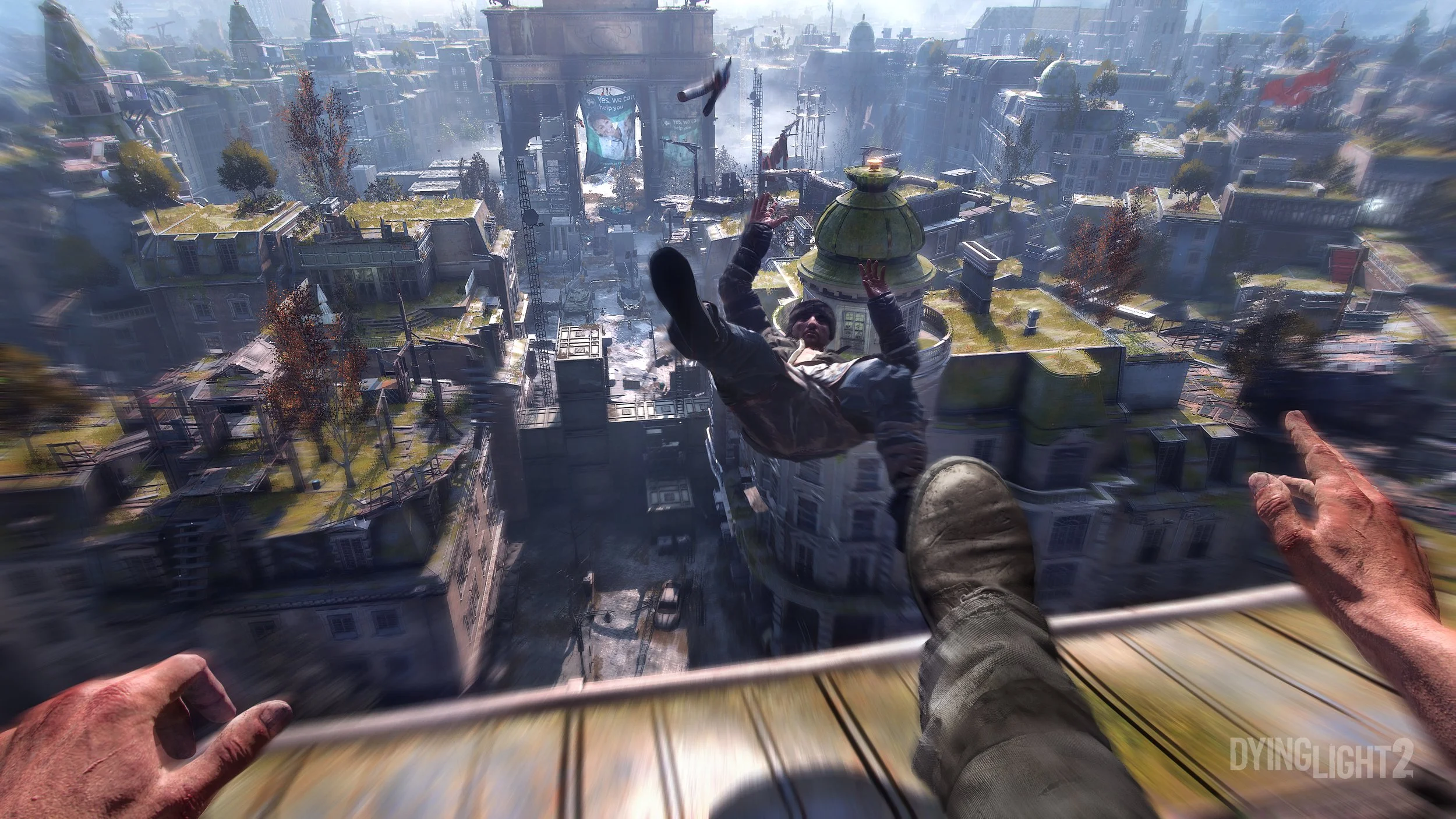This City Will Eat You Alive: Parkour, Capitalism, Videogames
Christian Haines, Managing Editor
Bouncing off a zombie’s head never gets old. Nor does leaping from rooftop to rooftop, jumping a fence, vaulting over furniture, only to slide down a zipline to another corner of the zombie-infested city of Harran. In Harran, the setting of Techland’s Dying Light (2015), parkour is the art of survival. It’s the practice of putting vulnerable flesh into motion, weaving between undead threats, in search of a cure for the zombie plague. It’s also absurd. Was I not supposed to laugh when the game reveals that the leader of the Tower – one of the few remaining safe havens in Harran – is a parkour instructor? Personally, when the apocalypse arrives, I’ll be searching out engineers and survival experts, not glorified pedestrians who missed the memo on sidewalks.
Parkour may be a strenuous and elegant sport, but it can’t help but appear strange compared to conventional modes of urban transportation. It abandons the axiom that the shortest path between two points is a straight line in favor of twisting circuits through the air. It turns urban space into a playground, ditching the horizontal safety of sidewalks for the vertical pleasures of walls, ledges, and dumpsters. So, why do video games like Dying Light, Mirror’s Edge, and Ghost Runner make parkour such an integral element of gameplay? In part, it’s because parkour suggests an almost superhuman capacity for movement; it blurs the line between what a human body can do and what’s only possible in the virtual realms of video games. It offers a glimpse of super heroics without the baggage – the capes and tights – of superheroes. You don’t have to be Superman to fly, you just need to take a running leap off a three-story building, bounce off the lid of a garbage can, and somersault over a chain-link fence.
There’s something else parkour does, though, and it’s more abstract, so bear with me: Parkour promises to reconcile the individual with the city. It’s the fantasy of transforming the dizzying expanse of the city into something a body can master. Throw out your bus schedules, forget which train station is closest to your apartment, all you need is your flesh and a rad pair of kicks.
Although he’s probably not thinking of parkour, Marxist cultural critic Fredric Jameson provides a useful term for this dream of successful urban navigation: cognitive mapping. Jameson’s riffing on the work of urban planner Kevin Lynch (The Image of the City), but whereas Lynch tries to explain how urban dwellers come up with mental maps of their cities, Jameson’s more interested in how those cities fit into global capitalism. Jameson’s point is that the places we live, especially cities, have become so deeply embedded in global capitalism that our individual perspectives on them are partial, incomplete, and skewed. We’re like fish trying to make sense of the world by examining the artificial coral in our glass bowls.
For Jameson, cognitive mapping names the hope for a conceptual compass that would make sense of the social worlds and physical spaces we inhabit. Marxist that he is, this hope is synonymous with class struggle, meaning he imagines it as a collective effort, one that’s not just about figuring out the social forces that shape our cities but also transforming our environment for the sake of justice and equality. One of Jameson’s favorite examples of cognitive mapping is the hard-boiled detective fiction of Raymond Chandler (The Big Sleep, The Long Goodbye, etc.). In Chandler’s novels, crimes like murder and blackmail reveal the dark underbelly of Los Angeles. Jameson interprets these shadowy dealings not as perversions or aberrations but as symptoms of the social violence that’s gone into making LA the city that it is. Jameson’s point is not so much that Chandler draws an accurate sketch of LA but that he draws the attention of readers to how cities are products of historical violence – the outcome of warring social forces that have congealed in concrete, glass, and steel.
How does parkour fit into Jameson’s vision of cognitive mapping? It’s a short-cut, a way of side-stepping the social dimension of cognitive mapping in favor of the individual. This isn’t synchronized swimming, after all. Parkour’s no team sport. It’s about individual fitness in the urban jungle; it’s the conquest of concrete terrain by sheer physical will. Trying to grasp the complicated process through which global capitalism shapes the world is hard work. Better to let your feet do the thinking, instead.
But back to video games. Games like Dying Light and Ghostrunner feature dystopian settings, because the exaggerated evil of dystopia turns the city itself into an obstacle to surmount. Yes, these games sometimes feature enemies, but enemies don’t really structure the gameplay. They’re narrative alibis for the ridiculous fun of parkour. In this context, urban alienation – the sense that the city is less a place to live than a concrete beast trying to swallow you whole – is the antagonism; it’s the driving force pushing the protagonist forward. When you level up in these games, you don’t just unlock new combat abilities but new ways of careening through space. It may seem like you’re fighting zombies or soldiers or cyborgs, but, really, these are avatars for the city as late capitalist juggernaut.
Geographers and sociologists like David Harvey, Saskia Sassan, and Mike Davis have written excellent theoretical treatises on how capitalism’s insistence on competition and its concentration of wealth have turned cities into spaces of inequality, spaces that undercut the rights to shelter, free movement, and sustainable living. Parkour video games are digital metaphors for these theories. They don’t so much represent cities as extrapolate the capitalist logic governing them into dystopian playgrounds. The pleasure in these games lies in perfecting your avatar’s acrobatic movement through the city, but this is more than a flow state – it’s a placeholder for cognitive mapping, the dream of a city without alienation.
Jameson once called conspiracy theory the poor man’s version of cognitive mapping. From The Parallax View to X-Files, conspiracy media map the workings of power by reducing them to a tight-knit cabal plotting in the shadows. It’s a nice fantasy, but it scarcely captures the complex operations of governments, corporations, and the other institutions that make up the contemporary landscapes of power. Parkour games are the poor gamer’s analysis of power. Not only do they fail to adequately account for how subtle systems of control can be, but they also imagine that the political impasses of the present might be solved by individuals. Individual heroism obscures significant questions like what kinds of people get to safely pass through a city, how do labor and social class structure urban environments, and where do the homeless fit into the picture. Jameson’s stringent Marxist politics are a useful reminder that such questions can only be addressed by groups struggling against the status quo.
Let me close by returning to my favorite parkour game, Dying Light. I don’t usually like zombies in my media, but the zombies in Dying Light perfectly embody the urban nightmare of late capitalism. They feel less like a horde than like the jagged edges of the city itself. Some of them shamble along the ground, some chase you over rooftops with terrifying speed, some pummel you with sledgehammers. Your best bet is to dodge, leap over them, slide out of their way. Don’t get me wrong: I enjoy the meatiness of the game’s melee combat, the visceral thump of slamming a crowbar into undead flesh. But it’s the feeling of soaring through the city that’s the real appeal. Well, that, and the fact that in this post-apocalyptic landscape, the key to survival isn’t a paying gig but cooperating with other survivors, scavenging concrete ruins, and – of course – parkour.







